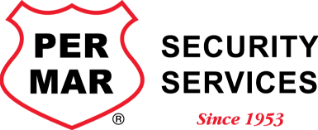Cold Temp/Pre-Freeze Residential Checklist
November 14, 2018
The cold Midwest temperatures bring more than just the need for heavy clothing layers and emergency supplies in every car! When Mother Nature brings conditions such as freezing temps and heavy snow, Old Man Winter brings a to-do list for homeowners. See our tips below on how to prepare your home for winter before the weather gets too extreme!
Pre-Winter Checklist
- Insulate – start in the attic to ensure you’ve insulated properly, including the attic door if needed. This is not only to keep the heat in but also to prevent it from going out (a heated roof can cause ice to melt and form ice dams on your roof (click here for more information from This Old House).
- Check throughout your home for any drafts and caulk or apply weather stripping to doors and windows, vents and fans, and other openings as needed.
- Keep the critters out – people aren’t the only one wanting inside where it’s warm! Check around your house for tiny entry points that allow mice and other unwelcome guests in. Seal off spaces around windows and doors (which you’ve already done in the previous step) and search for other common entry points such as the sink or dishwasher. Vents aside, anything bigger than a dime gets plugged up with caulk or foam (use wire netting for vents to keep air flowing).
- Inspect your roof – while you have the caulk handy, use this time to inspect your roof for any damage or hire a professional to help. Look for properly affixed shingles, excessive growth such as moss and cracked or warped sealants around the chimney, pipes, skylights or satellite dish.
- Buy a roof rake – too much snow can weigh in and cause your roof to collapse so you’ll want to keep it clear of accumulated snow (or hire a professional to help).
- Keep your gutters clean – leaves in gutters means frozen gutters which can lead to blockages allowing melting ice and snow to seep in. Install mesh or leaf guards to avoid this pesky job and, while you’re up there, ensure your gutters are at the right angle (between 1/16 and 1/8 inch per foot).
- Seal your concrete – sealing any cracks in your walkways and driveway will help prevent those cracks from growing in size as water seeps in, freezes, and expands over the winter months. By now, you should be feeling like a professional caulker/sealer!
- Ceiling fans are not just for summer months – reversing the direction of your ceiling fan blades to a clockwise direction will push the warm furnace air down. This small trick keeps you warmer and your heating bill lower!
- Get out your home’s winter “wardrobe” – thicker, darker curtains and area rugs can help retain the heat you so desperately want in the winter.
- Control your indoor temps with a smart thermostat – this ensures you’re only heating (and spending) when needed and allows you to remotely make adjustments when there are sudden changes in the weather. It’s also a good idea to keep the thermostat no lower than 50 degrees Fahrenheit while you are away for long periods in order to avoid frozen, bursting pipes in the winter.
- Install environmental monitoring detectors – instantaneously know when any of the following leaks or conditions happen:
- Low and high temperatures (low temps can lead to frozen, bursting pipes)
- Flooding and other water leaks: furnace, washer, refrigerator, freezer
- Sump pump failure
- Carbon monoxide
- Gas (propane, LPG, LNG, etc.)
In addition to the Monitoring Center, Home Automation allows you to take matters into your own hands, instantly. Whether or not you are home, receive instant text or email alerts on any web-enabled device for environmental changes that occur in your home or on your property. Take total control and react before the damage is done.
As always, we believe there is no reason your home should not be completely safe – and your mind at ease – at all times. Our number one job is to protect you, your family, and your home. Contact us or request a free security review for more information on environmental monitoring and our other home security services.
 Careers
Careers Customer Support
Customer Support (800) 473-7627
(800) 473-7627 Contact Us
Contact Us Locations
Locations